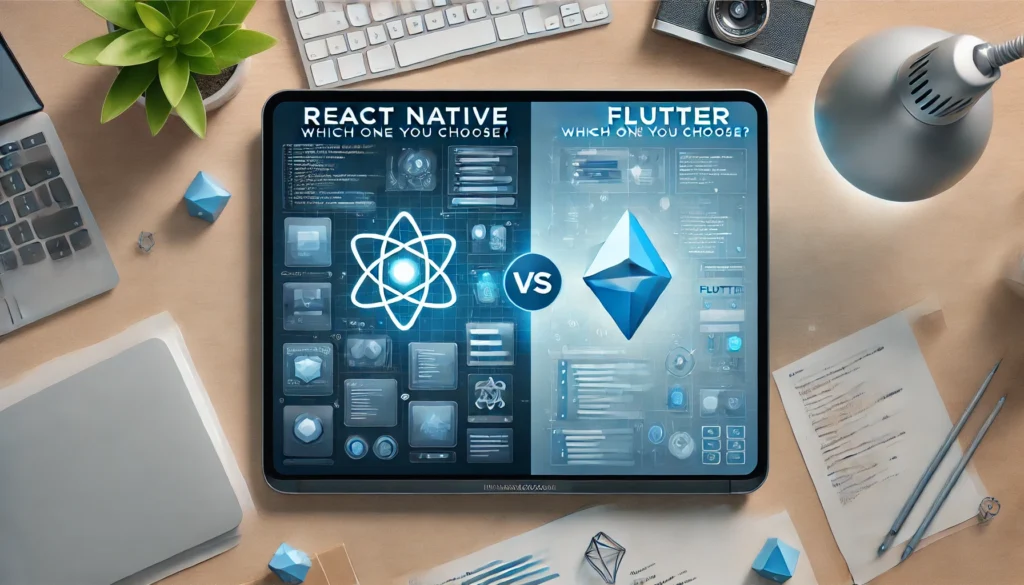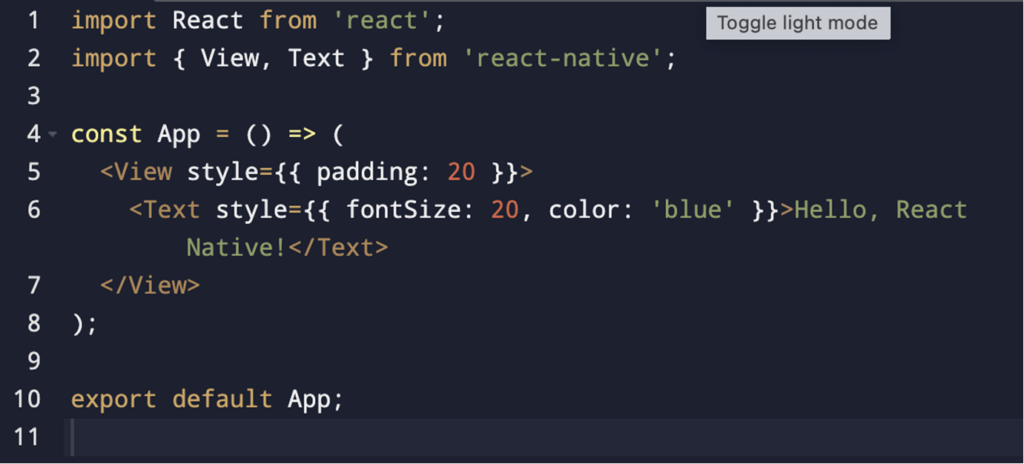
So, you are thinking about building a mobile app? That is awesome! But now, you are stuck between React Native and Flutter. Don’t worry; you are not alone. Let us break it down in simple terms so you can make the right choice.
If You Are A Web Developer, React Native Is Easier
If you already know JavaScript or TypeScript, React Native is the best option. Why? Because you don’t have to learn a new language like Dart, which is used in Flutter. JavaScript is already popular, and many developers are familiar with it.
- React Native follows a similar structure to React, making it easier for web developers.
- Dart, used in Flutter, is not as widely used as JavaScript, so finding resources and developers can be harder.
- If you are comfortable with web development, React Native allows you to reuse existing skills and knowledge.
- If you are comfortable with hooks, then you can easily write anything as a component which can be re-used in React Native.

JSX Is Clean, Flutter Widgets Can Get Messy
React Native uses JSX, which looks like HTML. It is clean and easy to read. On the other hand, Flutter uses widgets, and the syntax can get complicated with too many brackets. For example:
Sample code for React Native :

<View><Text>Hello</Text></View>
Simple and clean!
Sample code for Flutter :

Container(child: Column(children: [Text(“Hello”)]))
Too many brackets!
If you like a simple and readable structure, JSX wins!
- JSX is closer to how web developers think, making the transition smoother.
- Flutter’s widget-based system can be powerful but has a steeper learning curve.
- React Native allows developers to use CSS-like styling with StyleSheet, making it more intuitive.
- React Native supports Tailwind CSS, making styling much faster and more efficient compared to manually creating widgets in Flutter.
Real Native Feel vs. Drawing Everything
React Native uses real native UI components, meaning your app feels like an actual mobile app. Flutter, on the other hand, draws everything from scratch, like painting on a blank canvas. This can sometimes make Flutter apps feel slightly different from native apps.
- React Native apps use platform-specific components, ensuring a native look and feel.
- Flutter’s custom rendering engine gives more design flexibility but can lead to minor UI inconsistencies.
- React Native apps can easily blend with the OS, while Flutter apps might have little performance variations.
React Native Supports Web and Desktop Better
Do you want your app to run on mobile, web, and desktop? React Native can do that! Flutter is improving in this area, but React Native has better support for web and desktop apps. Even companies like Microsoft use React Native for Windows apps.
- React Native has mature support for web and desktop through projects like react-native-windows and react-native-web.
- Flutter supports web and desktop, but it is still evolving and not as optimized.
- If you need cross-platform compatibility, React Native offers better stability.
Recent Architecture Changes In React Native And Improved Performance
Previously, React Native used a “bridge” to communicate between JavaScript and native modules. However, this introduced performance issues due to asynchronous communication. To solve this, React Native introduced a new architecture using JavaScript Interface (JSI).
- JSI removes the need for a bridge, allowing direct communication between JavaScript and native code.
- This results in better performance and smoother UI updates.
- React Native can now hold references to native components and call methods directly, reducing latency.

Meanwhile, Flutter does not rely on a bridge at all since it renders everything using its own canvas. This gives Flutter great performance, but React Native’s new JSI implementation has significantly narrowed the gap.
A Huge Community And Tons Of Libraries
React Native has a massive community, which means lots of support, tutorials, and ready-to-use libraries. Flutter is growing, but it is still not as big. More support means easier problem-solving.
- React Native has been around longer, leading to a more mature ecosystem.
- More third-party libraries are available for React Native, speeding up development.
- Flutter’s community is growing, but React Native’s support is still more widespread.
In Simple Words:
- If you know JavaScript, React Native is easier.
- JSX is simpler than Flutter’s widget-based structure.
- React Native provides a real native experience.
- React Native supports web and desktop apps better.
- It has a bigger community and more libraries.
- React Native integrates well with existing JavaScript frameworks.
- Flutter offers better performance but requires learning a new ecosystem.
So, if you are from a web development background, React Native makes the most sense. You already know the language, the style, and the structure. Why start from scratch when you can use what you already know?
Go with React Native and start building amazing apps!
Leave a Reply